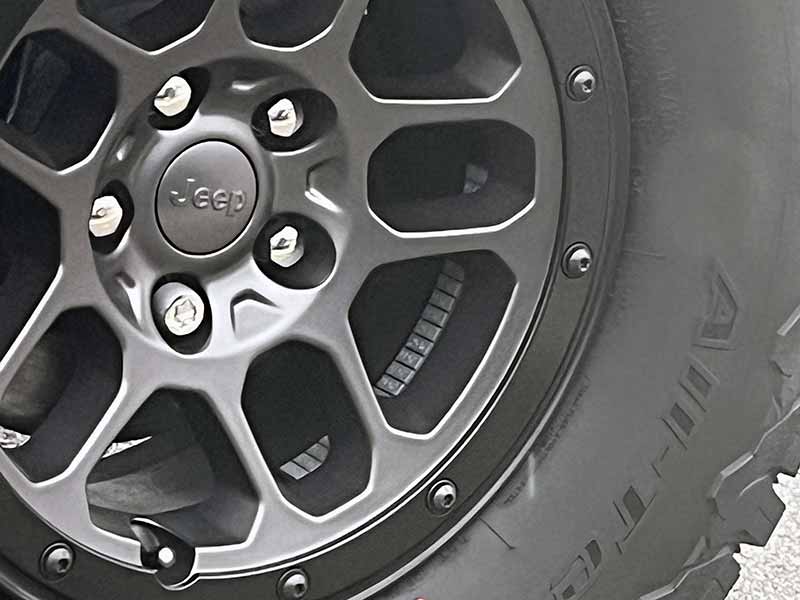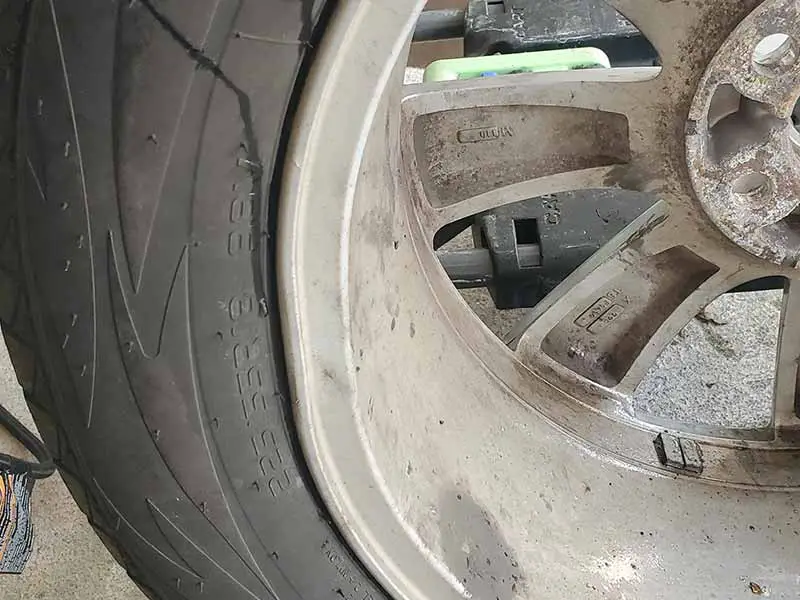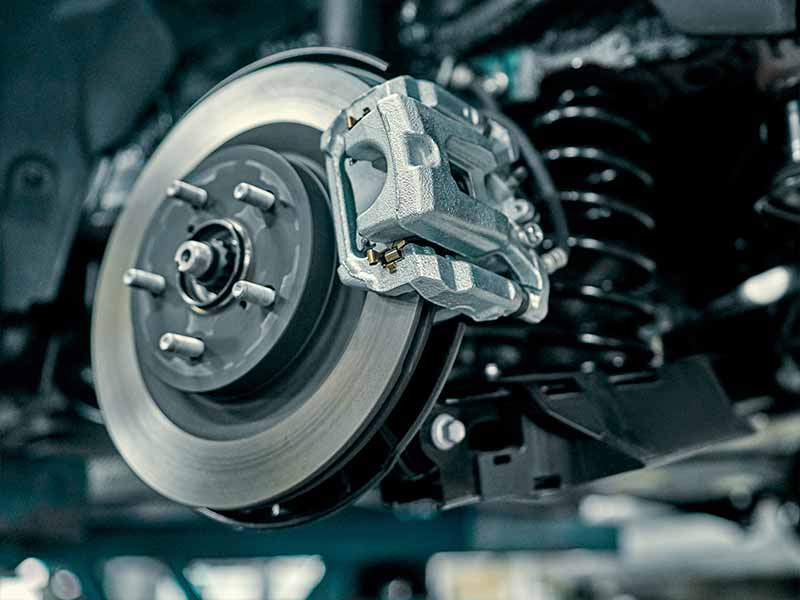Ever had that unsettling feeling when your car is vibrating, but only when you hit that certain speed? It’s more than just a weird quirk – your vehicle might be trying to tell you something.
Car Vibrates At Certain Speeds
Car vibrations at certain speeds are often caused by issues related to tires, wheels, or alignment. However, they can also stem from engine problems, faulty brakes, or steering system problems.
In this article, we’ll dive deep into the common reasons why cars vibrate, guide you through identifying the issue, and offer solutions to get your ride back to its smooth self.
Let’s take a closer look.

Vibrations at Certain Speeds: What’s the Deal?
We’ve all been there. Your drive is smooth, but suddenly, as the speedometer hits a specific number, your car decides to do its rendition of a jitterbug. Vibrating only at certain speeds can be both puzzling and concerning. Let’s break down what’s happening.
Why Only at Certain Speeds?
The truth is, every part of your car has a natural frequency at which it vibrates. When certain conditions align, these vibrations can become amplified, and you, the driver, feel them more noticeably.

Tires And Wheels
When talking about a shaking car, tires and wheels are often the usual suspects. Let’s take a closer look at the specific problems with them.
Out of Balance Tires and Wheels
- What’s Going On: Sometimes, tires and wheels can get a bit out of whack. If their weight isn’t evenly distributed, they won’t roll smoothly.
- Symptom: This can give you a shaky ride, especially when cruising at certain speeds.
Underinflated or Overinflated Tires
- What’s Going On: Tires need the right amount of air to perform their best. Too little or too much, and they start acting up.
- Symptom: The car might feel like it’s wobbling or even bouncing a bit on the road.
Uneven Tire Wear
- What’s Going On: If parts of your tires are more worn out than others, it’s not a smooth roll anymore.
- Symptom: This can make your ride feel bumpy, and sometimes your steering wheel might join in with its own shaky dance.
Tire Defects
- What’s Going On: Sometimes, a tire might have manufacturing issues or damage that’s not visible at first glance.
- Symptom: This can cause some unpredictable vibrations, making you feel like the road’s gone wild.
Worn-out or Bald Tires
- What’s Going On: Over time, tires lose their grip. When they’re almost bald, they don’t connect with the road the same way.
- Symptom: Your car might feel slippery, and yep, those vibrations can kick in.
Bent or Damaged Wheels
- What’s Going On: If a wheel is bent, even just a bit, it can’t roll as evenly as it should.
- Symptom: Expect some shaky feedback as you drive, almost like your car’s telling you it’s not feeling 100%.

Worn-Out U-Joints & Loose Parts
When your car shakes, two potential culprits could be source of the problem: worn-out U-joints and loose parts. Both can be sneaky, causing vibrations and noises that can be hard to pin down. Let’s shine a spotlight on them.
Understanding U-Joints
Universal joints, affectionately known as U-joints, are critical components in your car’s drivetrain. They act as pivot points that transfer power from the engine to the wheels, allowing for movement and flexibility.
Signs of Worn-Out U-Joints:
- Specific Speed Shakes: One tell-tale sign is vibrations that kick in at particular speeds, often between 40-60 mph.
- Clicking or Clunking: Heard a strange noise when starting or shifting between drive and reverse? That could be a U-joint crying out for attention.
- Rough Drive: If the drive feels uneven or has a sporadic jerk, worn U-joints might be the culprits.
Addressing the Issue:
- Regular Inspections: U-joints are hardy but aren’t immortal. Have them checked periodically, especially if you start noticing any of the signs.
- Replacement: If they’re worn out, they’ll need replacing. It’s a job best left to the professionals, given its intricate nature.
Loose Parts: Body Panels And Trim Pieces
While U-joints are a specific component, loose parts could be anything! From exterior components to under-the-hood bits, anything not securely fastened can cause problems.
Signs of Loose Parts:
- Aerodynamic Vibrations: At certain speeds, the wind might cause loose exterior parts to flutter, leading to vibrations.
- Rattling Noises: That unexplained rattle? It might just be a loose part bouncing around.
- Visual Anomalies: Sometimes, the simplest sign is seeing something out of place, like a hanging bumper or loose trim.
Addressing the Issue:
- Routine Checks: Every so often, do a walkaround of your vehicle. Check for anything that looks out of place or feels loose.
- Secure or Replace: If you find a loose part, either secure it back in place or, if it’s damaged, consider replacing it.
- Professional Eye: If you’re hearing noises or feeling vibrations but can’t spot the issue, have a mechanic take a look. They’ve got the expertise to pinpoint and fix the problem.

Other Common Reasons Why Cars Vibrate
Let’s dive deep into the nitty-gritty of why cars and trucks might vibrate and shake. Let’s break them down.
Brake Issues
No one likes car problems, but issues with brakes? Those are especially unnerving!
- Brake Pads: These are like the cushions for your brakes. They help stop your car smoothly. But like everything, they wear out over time.
- Symptom: If your brake pads are toast, pressing the brake pedal might make your car vibrate. Think of it like a washing machine on an uneven floor; it’s not gonna be a smooth stop.
- Brake Rotors: These are the shiny discs you might’ve seen behind a car’s wheel. They play a big part in stopping your car.
- Symptom: If they’re warped or damaged, they can’t grip the brake pads properly. That mismatch can make your car shake like it’s scared of stopping.
- Sticky Brake Calipers: Brake calipers play a starring role in the brake system, essentially acting as the clamps that squeeze the brake pads against the rotors to halt your vehicle. However, sometimes these calipers can misbehave.
- Symptom: When a brake caliper sticks, it continuously presses the brake pad against the rotor. This not only heats up and wears out the brake pad but can also cause your car to feel like it’s being pulled to one side. And yes, you guessed it, this can also result in that unsettling car vibration, especially when you’re trying to brake.
Engine Problems
Engines are like the heart of the car. If they’re unhappy, you’re going to feel it.
- Spark Plugs: These little guys ignite the fuel in your car’s engine. It’s like the spark that starts a campfire.
- Symptom: If they’re faulty, your engine might miss out on some of those sparks. The result? Your engine compartment might start humming or vibrating.
- Motor Mounts: Think of these as the cradle for your engine. They hold it in place, all snug and tight.
- Symptom: If they get damaged or wear out, your engine isn’t held firmly. It might move around more than it should, leading to vibrations you can feel inside the car.
Steering and Wheel Hub Issues
Let’s not forget about the parts that guide and carry your car!
- Power Steering Fluid: This is the magic juice that makes turning your steering wheel feel easy-peasy.
- Symptom: Low on this fluid? Your steering might get tough, and yep, you guessed it – the car might vibrate.
- Wheel Bearings: These help your wheels spin smoothly. It’s like they’re the butter in a perfectly baked cookie.
- Symptom: If they’re damaged, your wheel might not spin right, leading to – surprise, surprise – a vibrating car.
- Steering System: All the parts working together to make sure your car goes where you want it to.
- Symptom: Problems in the power steering parts can cause the whole car to shake, especially if you’re turning the wheel.

How to Identify the Issue
So, you’ve noticed your car is vibing a bit too much lately, and not in a fun way. But how do you figure out what’s causing the jitters? Here’s your step-by-step guide to playing detective.
Observe the Timing
First things first, you need to note when the shaking happens:
- Constant Shakes: If your car is vibrating continuously, regardless of speed, there’s a good chance it’s related to the tires or wheels.
- Shaking at Certain Speeds: If the vibrations only kick in when you hit a specific speed, you might be dealing with out-of-balance tires.
- Only When Braking: Feeling the shakes primarily when you hit the brakes? Time to investigate the brake pads and rotors.
Inspect Your Tires
Your tires speak volumes. Look out for:
- Uneven Wear Patterns: Are some parts more worn out than others? That’s a clue!
- Bald Spots: If your tires are smooth in some places, they’re screaming for a replacement.
- Tire Pressure: Grab a tire gauge and check if they’re underinflated or overinflated.
Feel the Steering Wheel
The steering wheel is more than just a guide; it’s a messenger:
- Steering Wheel Shake: If it’s jittery, especially at certain speeds, it often points to tire issues.
- Hard to Turn: Struggling to make a turn? Could be a sign of low power steering fluid or other steering system issues.
Listen Closely
Your ears can be just as valuable as your eyes:
- Grinding or Groaning: This might indicate an issue with the wheel bearings.
- High-Pitched Squealing: Often a telltale sign that your brake pads need checking.
Press the Brake Pedal
Does the brake pedal feel different? Maybe it pulses? This can give hints about the state of your brake pads and rotors.
Pop the Hood
Sometimes, it’s worth taking a peek inside:
- Check for Visible Issues: Like damaged belts or hoses which might cause the car’s engine to act up.
- Examine the Motor Mounts: Ensure they don’ appear to be leaking fluid, have any cracks, or appear to have shifted. If they look worn out or damaged, that might be the source of the vibrations.
Professional Help
Lastly, if you’re unsure or just can’t pinpoint the cause, it’s always a good idea to see a mechanic. They’ve got the tools and expertise to dig deeper and spot things we might miss.
Resources
Below are some links you may find helpful when learning about tires
Final Thoughts
A truck or car vibrating isn’t usually just a weird quirk—it’s often a signal. The roots of these vibrations can range from tire-related issues to deeper concerns like worn-out U-joints or even seemingly insignificant loose parts.
Key to a smooth and safe drive is understanding these signs, being proactive, and addressing them with timely interventions. So, equipped with this knowledge, you can confidently address any unexpected car vibration, ensuring both its longevity and your peace of mind.
Good luck and happy motoring.





